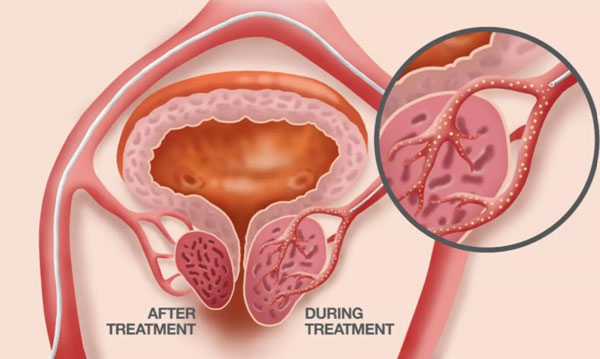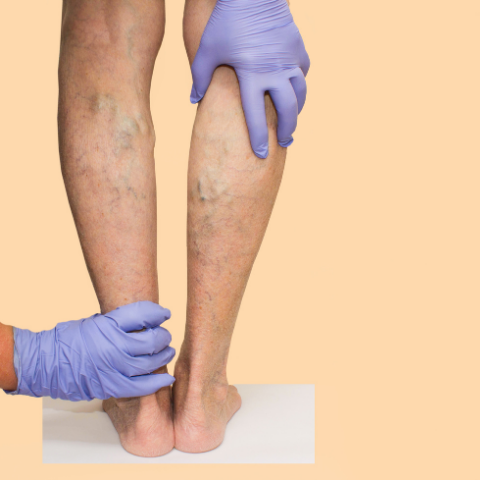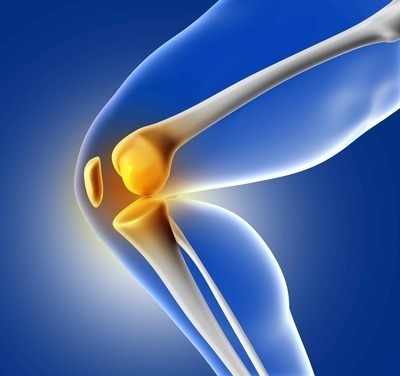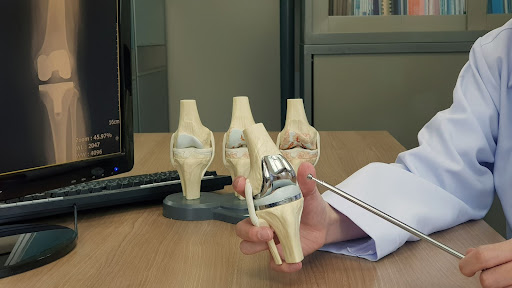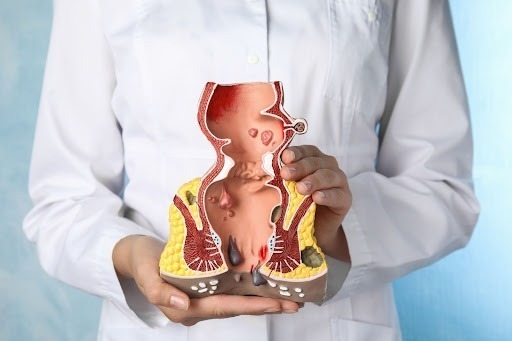ACL Reconstruction / Orthopaedic
How To Prevent Arthritis After ACL Surgery?

by admin
13th July 2023
6 minutes read
Anterior cruciate ligament (ACL) tear is one of the most common athletic injuries, and this can lead to serious long-term complications. ACL injuries can lead to arthritis (joint inflammation) later in life, even after providing effective treatment.
The chances of osteoarthritis post-ACL surgery are quite high. Almost half of the people undergoing an ACL repair suffer from this form of arthritis within 12 to 14 years of surgery.
Pain, stiffness, and swelling are the primary symptoms of arthritis. It affects knee stability, range of motion, and flexibility and limits your daily activities like standing, walking, getting up from a chair, climbing the stairs, etc.
However, a few preventive measures can be taken to avoid the risk of arthritis post-ACL surgery.
How can you Prevent Arthritis after ACL surgery?
Fortunately, few preventive measures can be taken during and after an ACL surgery to avoid the risk of arthritis in the future.
- Proper postoperative care
- Recovery is an essential part of any surgery as it promotes healing and helps to regain the range of motion, stability, and flexibility
- You can also start walking and take your medications on time as they will help in reducing pain, inflammation and swelling
- Avoid any high-impact sports or activities
- Your knee joint after an ACL surgery is very vulnerable. It is better to avoid any high-impact activities or sports in the initial days of recovery (at least for 3 to 6 months). These exert unnecessary strain on the operated knee and can cause wear and tear.
- High-intensity activities such as basketball, soccer, gymnastics, skiing, football, etc., can lead to falls and can increase the risk of knee damage.
- Physical therapy
- This is one of the most effective ways to prevent arthritis after an ACL surgery. It helps improve your flexibility and reduces knee stiffness.
- Low-impact exercises are very effective in reducing the rate of arthritis. It helps strengthen the muscles around the knee joint and lowers the risk of wear and tear.
- Using ACL braces
- This is a protective brace that is used after an ACL reconstruction surgery.
- It provides support during movement and protects the knee from unwanted trauma.
- Regular and timely follow-ups post ACL surgery
- Make sure you schedule regular follow-ups with your orthopedic surgeon and physical therapist.
- This helps in the early detection of any inflammation of the knee, if present.
- Maintain a healthy lifestyle after the surgery
- Keep a check on your diet, to maintain a healthy weight.
- Excess weight puts more strain on the knees.
- Maintain your overall health
- Make sure your blood sugar levels are under control
- Increased blood sugar levels lead to delayed healing which can lead to infections and joint inflammation.
Note that it is also important to avoid activities such as sports to prevent re-injury. As a matter of fact, around 30% of patients have, as a result, experienced a re-injury. This further increases the chances of osteoarthritis.
What Are The Exercises That Prevent Arthritis After ACL Surgery?
Exercise is one of the most important parts of recovery and rehabilitation. Exercise can help relieve post-surgery complications like pain, stiffness, swelling, and inflammation. It helps strengthen the muscles that support the joint, which acts as a shock absorber, helps maintain bone strength, and controls your weight. Gentle, low-impact exercises are best since they minimize joint stress and increase flexibility and strength.
The following exercises are safe post ACL surgery (generally 2-4 weeks post surgery)
- Walking
- You will be encouraged to walk immediately after the surgery once you are stable.
- You can continue walking daily by increasing the duration and speed.
- Leg raise (lying)
- Leg raises help to strengthen your quadriceps, which are large muscles on the front of your thighs that attach to your knee joints. You should do 3 to 5 sessions daily.
- Steps:
- Lie on the floor with your operated leg straight. Tighten your thigh muscles and raise your operated leg over a few inches. Hold for 10 seconds, and bring down your leg on the floor. Rest for a minute and do another set.
- Hamstring stretch (lying)
- This exercise stretches and strengthens your hamstrings, which are the muscles on the back of the thigh that attach to the knees.
- Steps:
- Place a towel over your foot of the operated leg and hold it with both your hands. Lie down on your back and bring your leg up until you feel a stretch behind your leg. Hold on for 30 seconds. Repeat it twice.
- Quad sets
- Quad sets help in building and maintaining the strength of your quadricep muscles.
- Steps:
- Lie down or sit on the floor. Roll a towel and place it behind your operated knee. Tighten your muscles at the front of your leg. Hold for 3 to 5 seconds. Repeat for 2 sets.
- One leg dip
- This exercise strengthens the muscles on the front and back of your thighs, as well as your buttocks.
- Steps:
- Use two stable chairs with back support, placing them on either side of your body. Place your hand on the back of each chair. Lift the non-operated leg about 12 inches above the ground. All your weight should be on the operated leg.
- Slowly bend down a few inches, pushing weight onto the heel of the supporting leg. Hold for 3 to 5 seconds. Slowly straighten up, repeat, and switch sides.
- Leg stretch
- Leg stretches improve the flexibility of your muscles. It improves blood flow and also your range of motion.
- Steps:
- Lie on your back and raise the operated leg. Hold your leg with both hands below your knee.
- Keep your non-operated leg bent with your foot on the floor. Pull your operated leg towards you, keeping it straight. Switch legs and repeat.
Takeaway:
ACL injuries are common among individuals with an active lifestyle, especially athletes, gymnasts, and fitness freaks. This damages the anterior cruciate ligament causing severe pain and limiting daily activities. This is corrected by ACL surgery which replaces the torn ligament with a band of tissue from other areas of your body or a deceased donor.
Recovery and proper follow-up post-surgery aid in healing and regaining your knee’s lost flexibility and strength. Negligence from your side could lead to various complications post-surgery, ACL arthritis being one among them. With good postoperative care, proper follow-up, use of ACL braces, and physical therapy, post-ACL surgery arthritis can be effectively prevented.
Disclaimer:
The content on this site is the copyright of Medfin and is intended for informational and educational purposes only. This should not be considered as a substitute for medical and surgical expertise. Results from any treatments or surgeries are subjective to an individual patient and the type of procedure/ surgery performed. Please seek professional help regarding any medical concerns. Medfin will not be responsible for any act or omission arising from the interpretation of the content present on this page.
CATEGORIES
- ACL Reconstruction
- Anal Fissures
- Anal Fistula
- Appendicitis
- ASK A DOCTOR
- Benign Prostatic Hyperplasia
- Breast Lump Excision
- Cataract
- Circumcision
- Conditions & Diseases
- Cosmetology
- Covid-19
- Cure
- Endocrinology
- ENGLISH VIDEOS
- Eye Care
- Gallstones
- General Surgeries
- Government Schemes
- Gynaecology
- Gynecomastia
- Health
- Health Insurance
- Hernia
- Hindi
- Hip Arthoscopy
- Hip Replacement
- Hip Replacement Surgery
- Hydrocele
- Kannada
- Kidney Stones
- Knee Arthroscopic
- Laparoscopic
- LASER
- Latest Treatments
- Lifestyle
- Liposuction
- Medfin Stories
- Medicine
- Nephrology
- Ophthalmology
- Orthopaedic
- Paraphimosis
- Patient Testimonials
- PCL Reconstruction
- Phimosis
- Piles (Hemorrhoids)
- Pilonidal Sinus
- Proctology
- Prostate Artery Embolization
- Rhinoplasty
- Second Opinion
- Total Knee Replacement
- Urology
- Uterine Artery Embolization
- Uterine Fibroids
- Varicocele
- Varicose Veins
- Vascular
- VIDEOS
